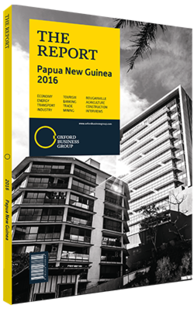Natural disaster risk creates a potential market for Papua New Guinea's insurance sector
Farms in Papua New Guinea are vulnerable to natural disasters and other risks, and this suggests the need to insure agriculture. Index-linked agricultural insurance is currently available in many developing countries, such as Thailand, Mexico and the Philippines, as well as in many advanced economies like Japan and the US. Some insurers in PNG see potential in this type of coverage and could soon be offering policies to insure farms in the event of weather-related and other risks.
In 2013 the World Bank published a prospective study on the implementation of the relevant products. The results were mixed. The study found that the country had a clear need to cover agricultural risk and concluded that significant opportunity exists. It also found that index-linked insurance would be a challenge in the country and that only a few lines would work, provided they are properly structured and supported.
Risks
PNG often experiences earthquakes, landslides and volcanic eruptions. It is hit occasionally by devastating typhoons, and in a 120-year period has witnessed an estimated 12 droughts. It is especially effected by the El Niño phenomenon. According to the World Bank, the 1997-8 El Niño cycle caused a severe drought and destroyed the sweet potato crop in the highlands. Fire is a danger to crops as well, as farmers use slash-and-burn techniques to clear the land.
The annual average damage from earthquakes is assessed at $62m, with a 1% chance of the damage being 10 times that amount. The country is fortunate to lie north of the cyclone belt, but nevertheless the loss for agriculture related to cyclone damage is estimated to be above $10m per year on average.
Challenges
Despite this abundance of risks, insurance products may be difficult to develop. Much of the agriculture sector is small-scale and subsistence in nature, and servicing these customers can be challenging. Few farmers have surplus funds to pay even modest premiums, and awareness concerning insurance is extremely limited. Insurers do not have the branch networks needed to reach potential customers, and currently do not possess the expertise to underwrite crop insurance. The necessary regulatory framework is also lacking. Data collection is another problem, as the Department of Agriculture and Livestock has been unable to carry out the annual surveys essential for the underwriters of crop insurance.
Opportunities
Yet the World Bank has identified several products that might work in the country. It says that traditional indemnity insurance covering single perils or named perils, paying out on a percentage-of damage-basis, may be successful if properly structured. “Meso weather index” products, covering major events such as hurricanes, and “macro weather index” insurance also show potential. The report noted that offerings based on remote sensing might work as well.
Any product would have to be carefully designed and marketed. Named peril coverage would have to target farmers working with larger estates and would ideally cover only tree crops such as oil palm and rubber. While 50 years of cyclone data exist, coverage for that risk would probably be most effective if offered to the government, rather than directly to farmers, so that it can provide social support in the case of a large storm.
Partnerships
Although the sector has traditionally been wary of the business risks, some executives are optimistic about the potential market. The World Bank suggests that any programmes would probably have to be developed on a public-private partnership basis. The insurers themselves may not have the resources to build the necessary capacity and cover the risks. A co-insurance pool has been suggested, as has the bundling of insurance with products that the farmers purchase. It may also be possible to sell wind-damage insurance along with micro-loans taken out by oil palm producers. The opportunities for livestock insurance are seen as extremely limited, although some opportunities for index-linked products may exist with the large, commercial enterprises dealing with pigs and poultry.
You have reached the limit of premium articles you can view for free.
Choose from the options below to purchase print or digital editions of our Reports. You can also purchase a website subscription giving you unlimited access to all of our Reports online for 12 months.
If you have already purchased this Report or have a website subscription, please login to continue.


